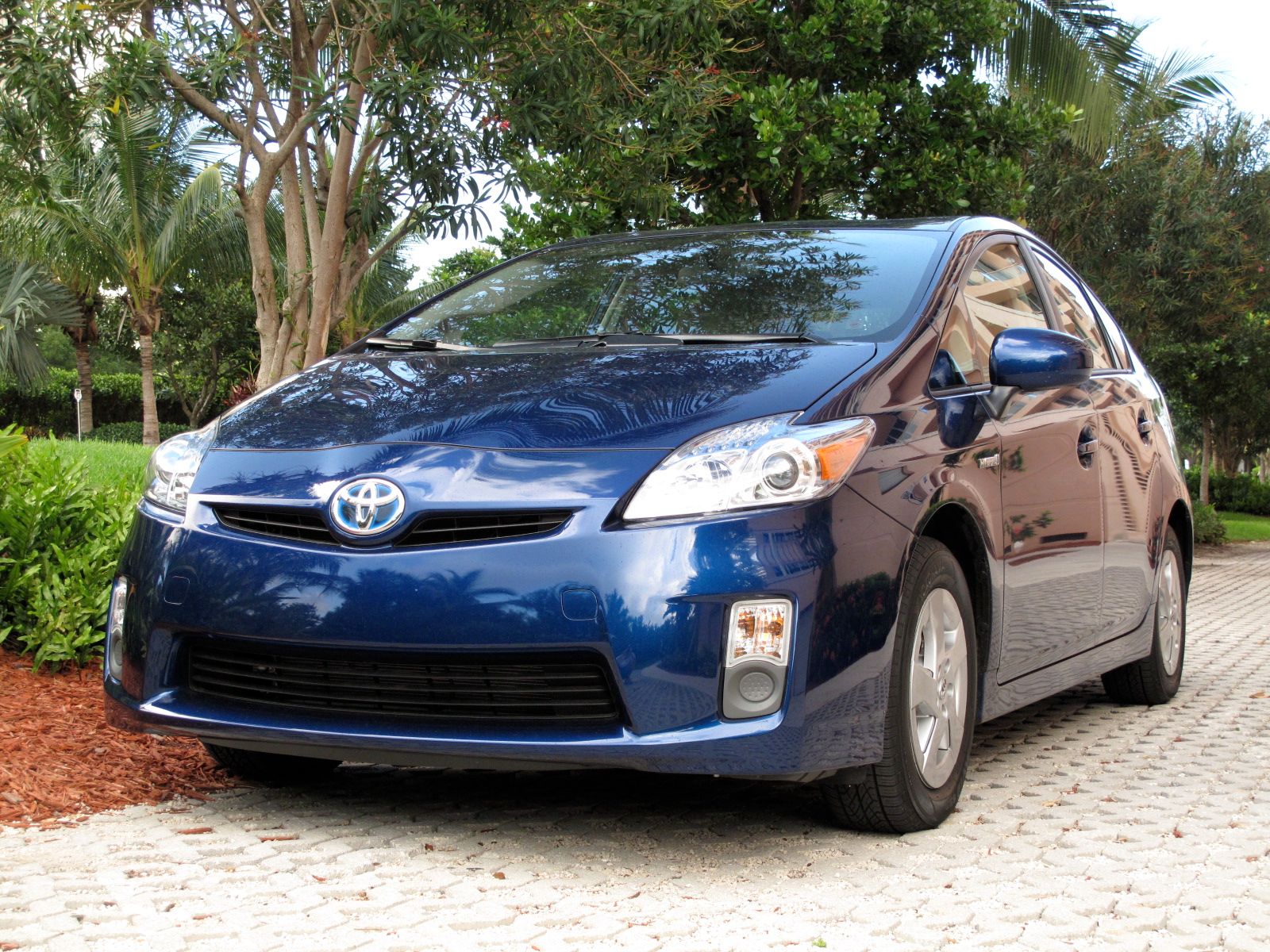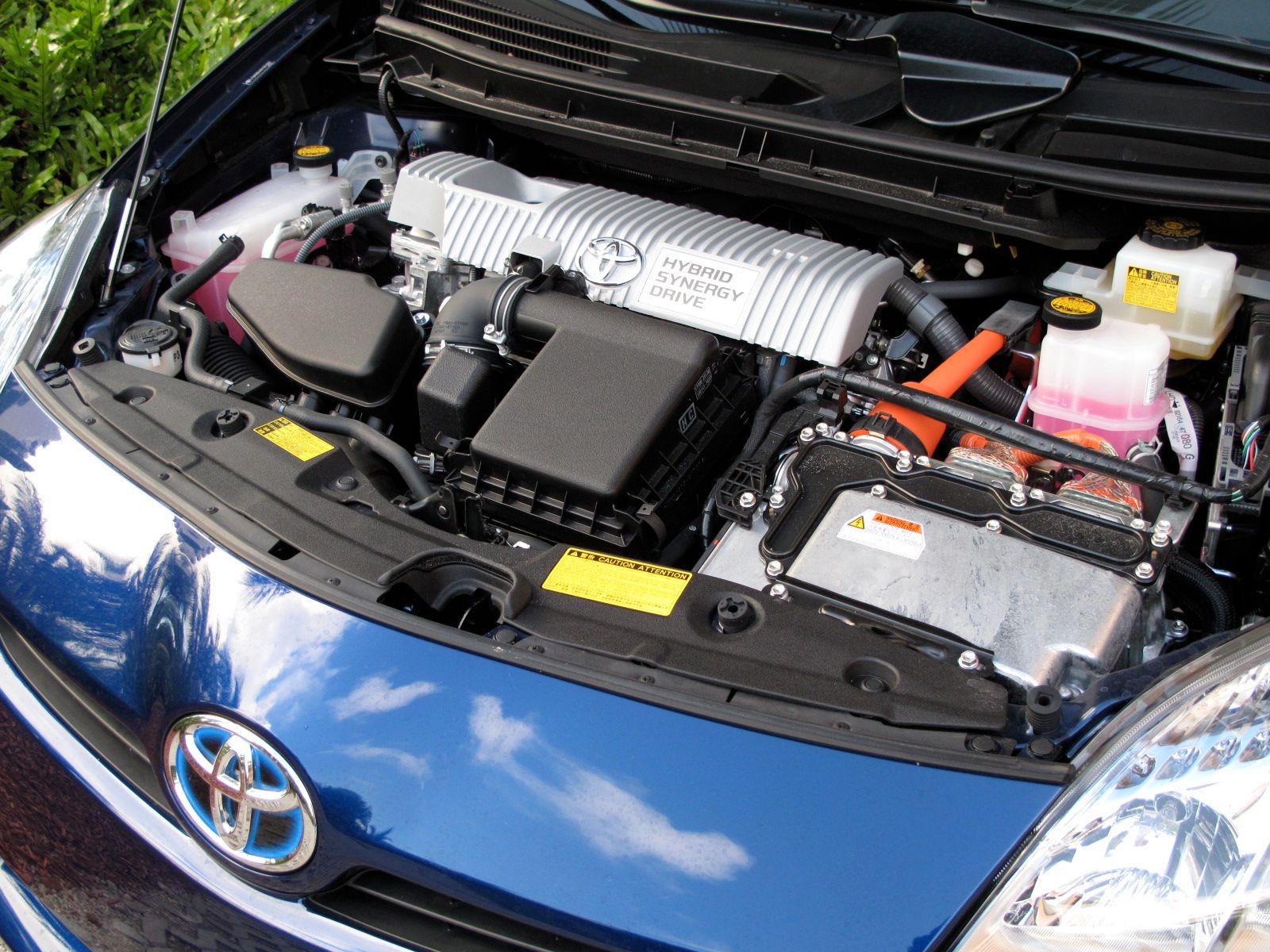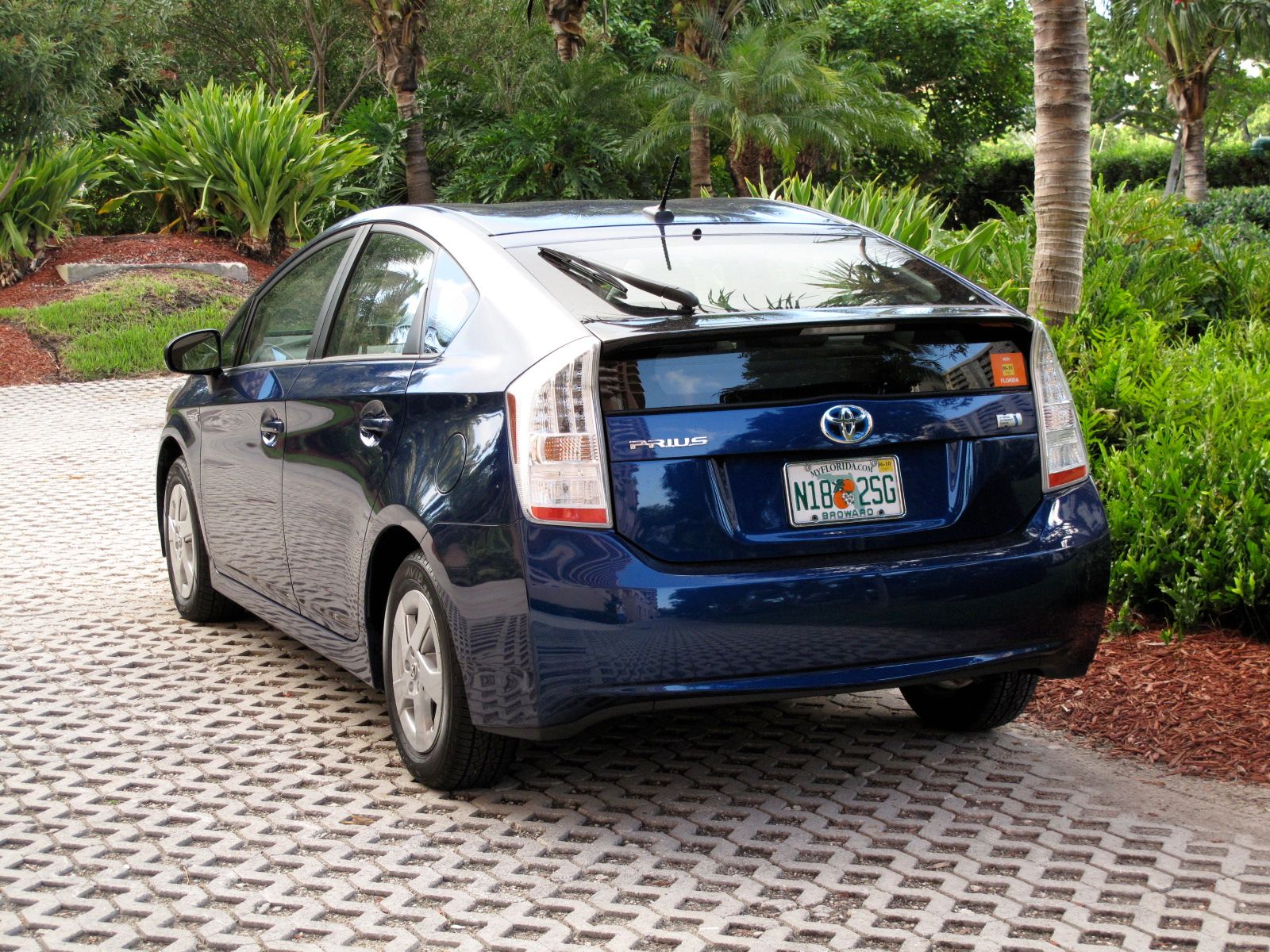We have just received a brand new third generation Toyota Prius into the Top Speed test fleet. Wile we are usually about high horsepower rides that are in contention to set land speed records even we must bow out and admit that these little Hybrid commuter cars are only going to become more common as time goes on. Now this is not quite the prototype we saw back in May, our 2010 Prius didn’t come with the very trick sunroof mounted solar panel and we didn’t even get leather. But that’s OK, because we do have the same 1.8 Liter Hybrid Synergy Drive engine that was in the previous Prius we saw. In an effort to improve fuel economy Toyota has decided to increase the engine’s displacement giving it more torque across the rev band meaning that it won’t have to work as hard getting the Prius moving to the tune of 50 MPG.
It seems that everything about the Prius->ke231 was made so that the car could cut through the air with the least amount of resistance. The bulges on the sides of the front bumper push air away from the turbulent rotating wheels at speed, which are covered with some pretty interesting plastic covers that were almost certainly included as a fuel-saving afterthought. The design team even incorporated finlets at the rear of the flat paneled under tray that are more functional that the majority of the diffusers bolted to the bottom of a rear bumper. Toyota engineers go to countless measures to squeeze every last ounce of efficiency from their flagship hybrid. A number that was being thrown around when we first spoke to a Toyota representative was one million, because that is how much the Japanese automaker spends every hour of every working day conducting drag reduction research which has led to the Prius’ .25 Cd.
Continued after the jump.
As part of the car’s low energy consumption gameplan, it has been fitted with LED headlamps and tail lamps, a feature only currently being offered on the Audi R8. On the inside the driver sits on new-plastic, a non-petroleum based synthetic product that Toyota only used in few select locations. New-plastic is denser than the traditional polymer so the added weight was an issue and therefore used only in select locations, but it is another environmentally friendly nod for the Japanese automaker. At first we were honestly a little turned off by the lack of leather or even a satellite radio, but when we looked at the spec sheet we could see why. Our 2010 Toyota Prius was selling for $23,500. After factoring in whatever cash for clunkers and or alternative fuel tax credit you could have had its like Toyota is practically giving the car to you, that is unless the dealership is looking for a premium. If Toyota can sell their most popular gas/electric hybrid at this price it will surely give the affordable Insight from Honda a run for its money.



